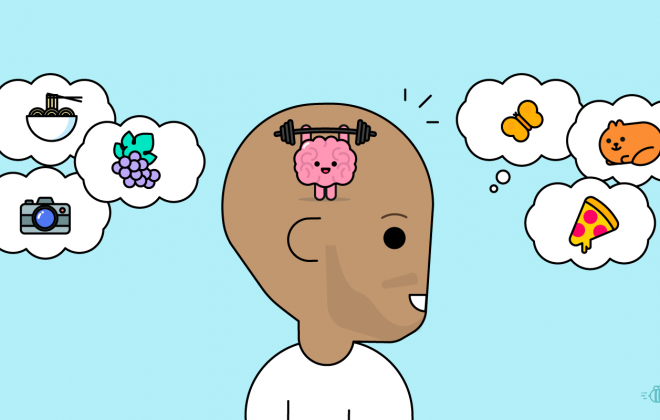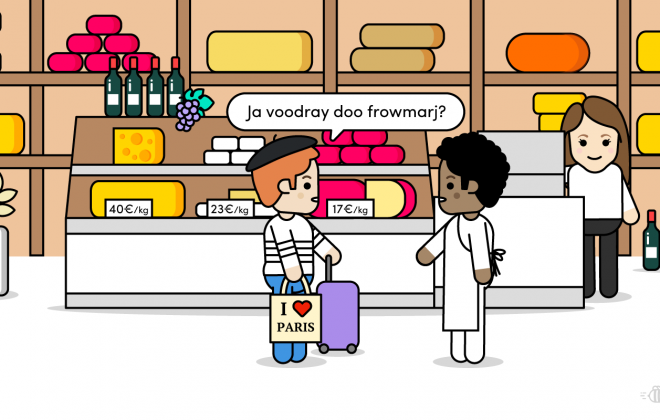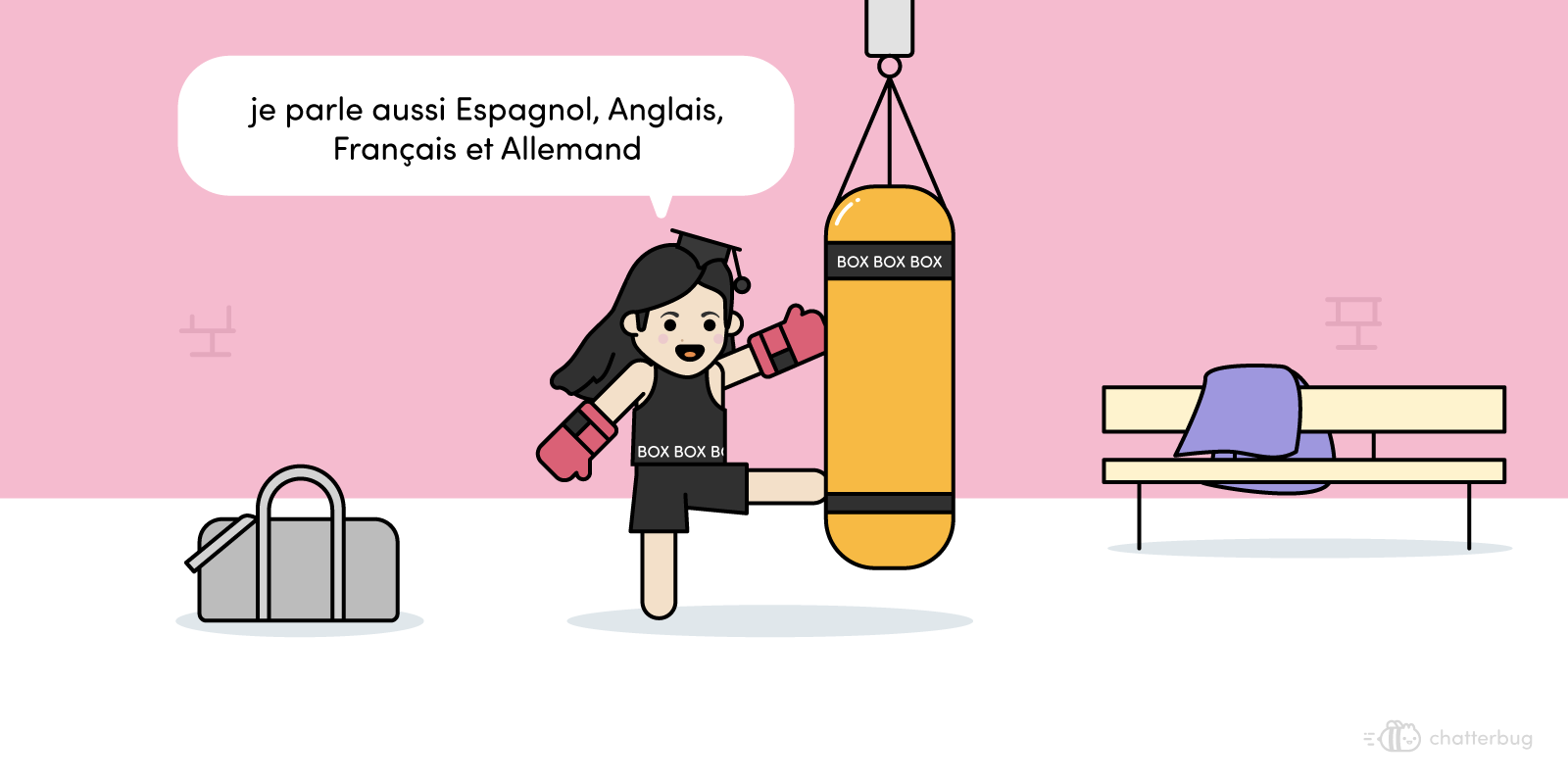How Does Age Affect Your Ability To Learn a Second Language?
It’s a common belief that adults are bad at learning second languages.
We’ve all heard someone say so, usually as an explanation for why they haven’t succeeded in learning a second language themselves. Sometimes, they’ll provide some anecdotal evidence to support this idea: they’ll point to their children, who seem to have done so well in their immersion program, or they’ll talk about how people who’ve immigrated as adults never seem to be able to get rid of their accent. The thought seems to be that there’s some sort of “window” during childhood for second language learning, and if you’ve missed it, well that’s just too bad – you’re committed to a life of monolingualism. But is it really true that you can’t learn a second language as an adult?
Before we can answer this question, there’s a more fundamental question we need to consider: why would we expect kids to be better than adults at learning a second language in the first place?
The Critical Period Hypothesis
While it’s difficult to say why people in general seem to believe that children are better with second languages than adults, the line of research leading up to this thought within Linguistics is pretty clear. It all begins with the notion of a critical period.
In developmental biology, a critical period is a maturational stage during which an organism is particularly attuned towards certain types of stimuli. A classic example is the white crowned sparrow: between ten to fifty days after it hatches, it is especially sensitive to birdsong. If, during this forty day window, it is not exposed to the singing of an adult of its species, it will ever learn to sing normally itself[1]. This window, then, constitutes a critical period for the sparrow.
This idea eventually caught on in Linguistics, though it originally applied to the ability to learn a first language. And there are many case studies that suggest that there is indeed a critical period for first language learning. Perhaps the most famous case is that of Genie, a woman who was raised in near total isolation until the age of thirteen, when she was taken into protective custody. Her linguistic development was subsequently studied, and although Genie was able to eventually learn to produce simple phrases (like “Genie love Marilyn”)[2], it was reported that she was never able to fully acquire language in the way a person would under normal circumstances[3].
The existence of a critical period for first language learning has since been further supported by studies on deaf children of hearing parents, who are often not exposed to sign language (and thus effectively not exposed to language at all) until well past the point when a hearing child would normally be. These studies have reported that in general, the later the child is exposed to sign language, the worse their attainment of sign language ultimately turns out to be[4][5]. These studies, along with case studies on children like Genie, have led to the widely-held acceptance within Linguistics of a critical period for first language acquisition. In other words, if you don’t learn at least one language during childhood, you’ll never learn any language normally as an adult.

A Critical Period for Second Languages?
While linguists generally agree that there’s a critical period for first language learning, there’s a lot more disagreement about the effect age has on second language learning.
There are a number of studies that seem to give pretty indisputable evidence that children are better at learning second languages than adults[6][7][8]. These studies find what are referred to as Age of Acquisition effects: up to about adolescence, the later you learn a second language, the worse you’re probably going to be in that language; after adolescence, results vary. A number of researchers have taken this as evidence for a critical period for second language learning. If you’re someone who wants to learn a second language (and you’re not still a child), this seems pretty damning, until you start to look into these studies a bit more closely.
First of all, it’s a bit strange to speak of a critical period for second language learning in the first place. As a 2017 review of the literature on critical periods for first and second language learning by Mayberry and Kluender points out, “logically, the [critical period for language] should govern the initial acquisition of language in early life, from both a behavioral and neural perspective, rather than the subsequent learning of [a second language] after early childhood, after grammatical structure and its neural circuitry have been acquired and established” (p. 2)[5]. That is, it just doesn’t seem to make any sense to think there’s a critical period specifically for second language learning: if you learned at least one language in the normal manner during childhood, then you’re probably in fine shape as far as language and critical periods are concerned, since you indeed received normal linguistic input within the critical period “window”. Furthermore, some researchers actually argue not for a true critical period, but rather a sensitive period for second language acquisition – in other words, that although you might be better at learning a second language as a child, it’s not impossible as an adult either.
Second of all, there are a number of issues with the studies that find Age of Acquisition effects. For one thing, many of the studies compare the language of adult second language speakers to that of monolingual native speakers – i.e, people who only speak one language. For example, when these studies examine the French language abilities of native English speakers who learned French as adults, these speakers are often compared to native French monolinguals.
Why is this an issue? Well, it turns out that even “balanced” bilinguals who learned both French and English as children don’t seem to process language in the same way as native French monolinguals (or native English monolinguals, for that matter). While there are studies that have found similarities in how monolinguals and balanced bilinguals perform on some language tasks[9], a number of studies have also found that the speech of bilinguals is just different in many respects than the speech of monolinguals, even if both languages were learned in childhood[10][11][12]. So it probably just isn’t a fair test to compare the speech of adult second language learners (who are, after all, bilinguals) to that of monolinguals, and yet this is precisely what a number of these studies have done.
There may be problems with the selection of adult second language learners that have been used in these studies as well. As pointed out in a 1996 paper by White and Genesee[13], if you want to find out if it’s possible for adults to reach “native-like” levels in a second language, you shouldn’t just grab a random sample of adults and see how they do on language tasks. Instead, your study should specifically use adults who are highly proficient in their second language and see how they do. After all, the question isn’t really whether or not adults in general reach native-like levels, but rather if any adults do, since a strict version of the Critical Period Hypothesis for second language learning would predict that no such adults should exist. And in fact, many studies have found adult second language learners who performed just as well on language tasks as natives. In fact, with respect to studies looking at phonological measures (that is, pronunciation or “accent”), which are often believed to be the most difficult for adult second language learners to master, Mayberry and Kluender (2017) reports that with only a single exception, every study they looked at that examined high-performing individuals found “at least one and up to four individuals who perform at native-like levels on both subjective (native speaker assessment) and objective (acoustic) measures of accent.” (p. 4)[5].

Comparing Child and Adult Second Language Learners
There might also be issues that come with comparing adult and child second language learners in the first place. For instance, it could be the case that children just tend to learn second languages in different settings than adult learners, and that this makes adults seem worse than they theoretically are. For example, if adults tend to learn in a classroom setting, while kids are more often placed in immersion settings (e.g via immersion programs in school or moving to another country where the “second” language is spoken), this doesn’t really make for a very fair comparison. After all, there’s a big difference between going to Spanish class a few times a week and having all your schooling (or your entire life) take place in Spanish! Even if you manage to find groups of children and adults with comparable second language experiences (say, by comparing children and adults who moved to another country where their second language was spoken), there may still be differences between the two groups (e.g. in things like attitudes or cultural identity) that are really difficult to quantify or control, but might still affect how a person learns a second language.
This brings up another major issue with studies that compare the second language learning of children with that of adults: they never measure proficiency in the first language. This might be really important, however, because when studies on adult second language learning report that children perform better in their second languages than adults, this is predicated on the idea that the first language is fully retained at normal native-like levels.
What do I mean by this? Well, we can imagine two different possibilities. In the first one, the children in these studies grow up sounding native-like in both their first and second languages, whereas the adult learners only sound native in their first language, but fail to ever become native-like in their second language. This is what researchers have typically assumed is happening, although we haven’t actually tested that assumption. However, there’s another possibility. Suppose that we were to measure the language skills of the children in these studies in their first languages, and we found them to be below native levels. In this case, children can’t necessarily be characterized as having some heightened capacity for second language learning, but may instead be doing something more like losing or replacing their first language with the second language – that is, treating it as sort of a second “first language”. While the finding that these children achieve native-like abilities in their second language would still be interesting in this case, it wouldn’t necessarily suggest that children are better at learning second languages than adults – at least not in the way we usually think of.

So what does all this research mean for you personally?
The truth is, the effect of age on second language learning ability is still an open question within Linguistics. However, there’s one thing that’s really important to remember: researchers’ concerns are not a normal person’s concerns!
When researchers set up experiments to see if adult second language learners have “native-like” production, they are often using pretty fine-grained measures. As researchers, we’re interested in questions like how does age affect one’s ability to learn a second language for what are typically theoretical rather than practical reasons: we might be trying to figure out how language is organized in the brain, for example, or trying to decide between two competing theories.
Your average person wanting to learn a second language, however, likely doesn’t really care about all the details of this research, they just want to know if it’s possible to learn a second language as an adult. And regardless of what Linguistics finds out about which theory is the best or how exactly the brains of monolinguals and bilinguals do or don’t “look” the same, most (if not all) linguists are going to tell you the same thing: yes, it is absolutely possible to learn a second language as an adult, even to a very high level.
Remember, even if researchers conclude that it’s impossible for adult second language learners to ever become “native-like”, that probably isn’t even your goal. The average person who wants to learn a second language doesn’t want to become indistinguishable from a native speaker on a neural and behavioral level; they just want to be able to travel, have some good conversations with people from other countries, and maybe read the newspaper or a book, and this is absolutely possible. Many Linguistics studies have reported adult second language learners who performed very well on their tasks – sometimes even well enough to fool native speakers![14][15]
So while it’s still an open question why exactly adults don’t seem to be quite as good as kids at learning second languages, nobody should feel discouraged from trying to learn a second language just because they’re not a kid anymore. Yes, it will take work. And yes, you may not ever become so proficient in your second language that you’ll be able to “pass” as a native speaker. But if you have the right tools, and you’re dedicated to your goal, it is clearly possible to become a very good second language speaker indeed, regardless of your age.
Bibliography
– [1] Marler, P. (1970). A comparative approach to vocal learning: song development in white-crowned sparrows. Journal of comparative and physiological psychology, 71(2, Pt. 2), 1-25. – [2] Fromkin, V., Krashen, S., Curtiss, S., Rigler, D., & Rigler, M. (1974).** The development of language in Genie: A case of language acquisition beyond the “critical period”. Brain and language, 1(1), 81-107. – [3] Curtiss, S. (1981). Dissociations between language and cognition: Cases and implications. Journal of Autism and developmental disorders, 11(1), 15-30. – [4] Mayberry, R. I., & Eichen, E. B. (1991). The long-lasting advantage of learning sign language in childhood: Another look at the critical period for language acquisition. Journal of memory and language, 30(4), 486-512. – [5] Mayberry, R. I., & Kluender, R. (2018). Rethinking the critical period for language: New insights into an old question from American Sign Language. Bilingualism: Language and Cognition, 21(5), 886-905. – [6] Johnson, J. S., & Newport, E. L. (1989). Critical period effects in second language learning: The influence of maturational state on the acquisition of English as a second language. Cognitive psychology, 21(1), 60-99. – [7] DeKeyser, R. M. (2000). The robustness of critical period effects in second language acquisition. Studies in second language acquisition, 22(4), 499-533. – [8] Birdsong, D. & Molis, M. (2001). On the evidence for maturational effects in second language acquisition. Journal of Memory and Language, 44, 235-249. – [9] Kovelman, I., Baker, S. A., & Petitto, L. A. (2008). Bilingual and monolingual brains compared: a functional magnetic resonance imaging investigation of syntactic processing and a possible “neural signature” of bilingualism. Journal of cognitive neuroscience, 20(1), 153-169. – [10] Fowler, C. A., Sramko, V., Ostry, D. J., Rowland, S. A., & Hallé, P. (2008). Cross language phonetic influences on the speech of French–English bilinguals. Journal of Phonetics, 36(4), 649-663. – [11] Sundara, M., Polka, L., & Baum, S. (2006). Production of coronal stops by simultaneous bilingual adults. Bilingualism: Language and Cognition, 9(1), 97-114. – [12] Grosjean, F. (1989). Neurolinguists, beware! The bilingual is not two monolinguals in one person. _Brain and language, 36(1), 3-15. – [13] White, L., & Genesee, F. (1996). How native is near-native? The issue of ultimate attainment in adult second language acquisition. Second language research, 12(3), 233-265. – [14] Ioup, G., Boustagui, E., El Tigi, M., & Moselle, M. (1994). Reexamining the critical period hypothesis: A case study of successful adult SLA in a naturalistic environment. Studies in second language acquisition, 16(1), 73-98. – [15] Moyer, A. (2014). Ultimate attainment in L2 phonology: The critical factors of age, motivation, and instruction. Studies in second language acquisition, 21(1), 81-108.
Want to learn more?
If you’re feeling inspired, sign up below for a free two-week trial and a Live Lesson with a private qualified tutor to start speaking a new language for real! Our classes are structured around exercises created by language teachers, so there’ll be no awkward silences – we promise! 😉
And don’t forget to check out our Facebook, Twitter and Instagram pages for more language content!



